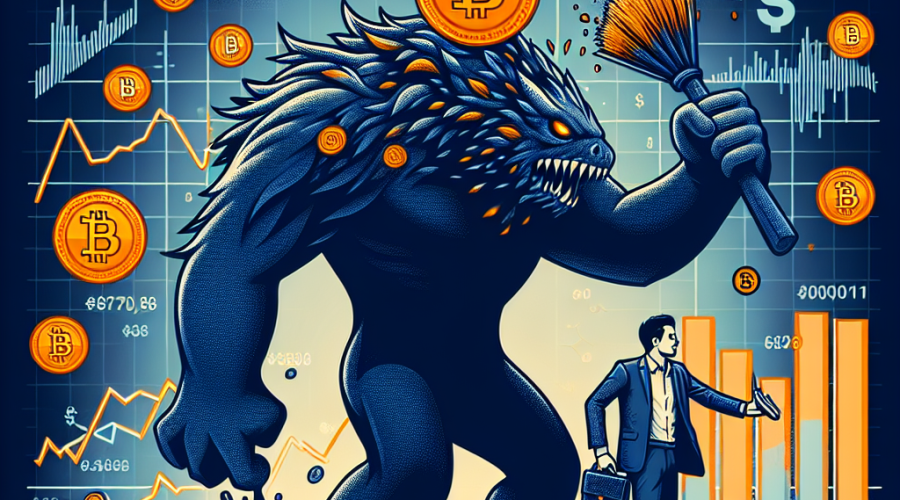The cryptocurrency market faced a turbulent week following a significant selloff on Friday, testing the resilience of various sectors and challenging perceptions of diminishing volatility in digital asset markets. Amid this upheaval, the Artificial Intelligence (AI) sector stood out as a beacon of strength, posting gains and even surpassing pre-crash highs. Meanwhile, decentralized finance (DeFi) platforms such as Aave demonstrated both the risks and the evolving sophistication of risk management in times of extreme market stress. Additionally, platforms like MetaDAO highlighted the burgeoning trend of on-chain financial innovation, achieving remarkable traction despite broader market headwinds.
AI Sector Leads Market Recovery
Following the sharp market downturn, the AI index emerged as the strongest performer among tracked sectors. The AI index surged 26% in the week, recovering losses more robustly than traditional financial instruments or most other cryptocurrency sectors. In comparison, gold, often considered a safe haven, also posted gains of 4.43%, making them the only two tracked indices to register positive returns on a week-over-week basis.
Traditional equity indices recorded a mild 1% decline over the same period, underscoring the AI sector’s relative outperformance. However, the broader crypto market suffered deeper losses, with sectors such as Solana Ecosystem tokens and Launchpads hit the hardest, remaining 24% below their levels from the previous week. Amidst this turmoil, a few exceptions shone through; notably, CLOUD achieved impressive gains of 41% in these underperforming sectors, demonstrating the potential for selective resilience even within battered categories.
Narrow Breadth of AI Recovery
Despite the headline gains within the AI index, the underlying breadth of recovery raised concerns about the overall health of this market segment. Of all the components tracked in the AI index, TAO was the sole token to register positive weekly gains, rising 29% as others lingered in negative territory. Industry observers note that a more widespread recovery across multiple assets is generally indicative of a healthier market rebound. As the dust settles from the selloff, the participation of a broader base of tokens in the uptrend will be a critical indicator to monitor for signs of sustainable recovery and market confidence.
A Return of Market Volatility
For much of the past year, cryptocurrency markets have been characterized by gradually declining volatility and reduced variance in price movements. However, Friday’s dramatic price swings starkly contradicted this trend. The so-called “fat tail” of returns—the occurrence of extreme outlier events—reared its head in the form of sharp, unexpected price drops. Such events serve as a reminder that even as markets mature, the inherent risks associated with crypto remain substantial and can materialize suddenly. For system operators, traders, and investors, the capacity to effectively manage these tail risks is vital for the ongoing growth and stability of the space.
Decentralized Lending Platform Aave Undergoes Major Stress Test
Decentralized finance, or DeFi, also came under the microscope in the wake of the selloff. Aave, currently the leading money market platform for decentralized lending and borrowing, accounted for an impressive 60% market share in this segment prior to the crash. With deposits exceeding $75 billion and more than $30 billion in active loans on its books, Aave’s management of these capital flows and associated risk is crucial for the industry’s stability.
During the selloff, Aave experienced liquidations totaling $193 million in loan value. Notably, more than 80% of the liquidated assets were denominated in stablecoins, underscoring the central role of these assets as collateral and trade instruments in DeFi. While the scope of Friday’s liquidations was significant, it was still lower than previous events, such as the $272 million liquidated in August 2024 and $204 million in February 2025. This trend suggests possible improvements in risk management and a shift in the composition or behavior of leveraged participants.
Aave’s exposure to highly volatile, lesser-known altcoins was also mitigated by restrictive collateral policies; most long-tail alternatives are not accepted as collateral on the platform. This contrasts with other decentralized exchanges for perpetual futures (perps DEXs), where such assets often account for a larger share of open positions and, subsequently, risk.
Risk Management Innovations: The USDe Example
A pivotal but relatively understated risk management decision played a crucial role in averting a potential catastrophe on Aave during the recent turbulence. Several months prior, the platform’s risk curators opted to hardcode the price of the stablecoin USDe to match that of USDT (Tether) within Aave’s risk modeling system. Although this choice provoked controversy—particularly since an impairment of USDe’s reserves could theoretically result in bad debt for lenders—it served a protective function for borrowers.
This became evident on Friday, when USDe’s price on Binance briefly plummeted below $0.70. Had Aave’s risk management system tracked the market price rather than the hardcoded value, it would have triggered massive liquidations as high loan-to-value USDe collateral would have been deemed under-collateralized. Given the sustained growth in USDe and synthetic equivalents—now amounting to billions in value—such a liquidation cascade could have dwarfed even previous records, saddling the platform with a wave of forced liquidations and collateral losses. Instead, the risk management intervention successfully insulated borrowers and preserved market stability during this acute stress test.
MetaDAO: On-Chain Financial Innovation Thrives Amid Turmoil
If the market turbulence laid bare the fragility and risks in certain corners of DeFi, it also highlighted the remarkable resilience and innovative drive exhibited by some new projects operating outside mainstream centralized exchanges. One example is MetaDAO and its native token META, which continued to achieve new all-time highs even as other sectors struggled.
MetaDAO has evolved from a novel “futarchy” (market-driven governance) experiment into a robust crowdsale platform for so-called “unruggable ICOs.” By doing so, it enables credible founders to raise capital while providing enforceable rights for token holders. The platform’s promise was recently demonstrated in the Umbra initial coin offering (ICO), which was conducted via MetaDAO.
Umbra ICO: An Efficient, Transparent Crowdsale
Umbra’s ICO was capped at a $3 million fundraising target—yet it attracted a stunning $154 million in total capital commitments. To manage this massive oversubscription, participants were allotted a proportional share of their commitment based on the cap, with surplus funds returned. Following its listing, the UMBRA token quickly achieved a fully diluted value (FDV) of $12 million, giving ICO participants a 4x return on their initial commitment within just one week. This level of transparency and equitable treatment stands in stark contrast to the opaque and often exclusionary practices of traditional ICOs.
Avici ICO Set to Launch Next
Building on this success, MetaDAO is now preparing to launch the Avici ICO. Designed to bring traditional financial services such as spending cards, credit lines, and mortgages onto the blockchain, Avici seeks to fill a gap in the crypto ecosystem—namely, the lack of robust infrastructure for reputation-based, undercollateralized lending. Avici’s public beta went live in August 2025, and has already generated $1.2 million in Visa spend, onboarding nearly 4,000 monthly active users with a strong 70% retention rate.
Looking to the future, Avici envisions evolving into a full-fledged neobank offering payroll integration, decentralized credit scoring, and on-chain mortgage issuance. Of particular note, the Avici ICO allocates no tokens to insiders, a departure from industry norms and a nod towards greater decentralization. The team, instead, will be compensated via a community-approved monthly treasury draw, subject to a futarchy-style on-chain governance process. The ICO itself sets a $2 million minimum funding target, aiming to democratize participation and grow the protocol’s user base.
MetaDAO’s Futarchy-AMM: A New Revenue Model
A further innovation underpinning MetaDAO’s recent momentum is the implementation of a “futarchy-AMM”—an automated market maker that facilitates both token sales and the realization of market-driven governance. Since the launch of Umbra, the AMM has generated roughly $50,000 in trading revenue in just four days, offering promising monetization potential for the platform.
As more high-quality projects turn to MetaDAO’s platform to conduct ICOs, this innovative model could underpin sustained growth and strengthen the value proposition of the META token, which has already surged 400% in recent weeks. For investors and users seeking alternatives to centralized exchanges and opaque fundraising methods, MetaDAO’s combination of transparent governance, innovative tokenomics, and on-chain financial engineering is increasingly appealing.
Conclusion: Navigating Challenges and Opportunities
The post-selloff landscape in crypto revealed both pressing risks and inspiring resilience. While the AI sector’s strength highlights the emergence of new leadership within digital assets, the narrowness of its recovery signals caution moving forward. DeFi’s leading platforms, particularly Aave, faced a stern test and demonstrated the critical importance of adaptable, forward-thinking risk management strategies.
At the same time, MetaDAO’s ongoing success story serves as a reminder that innovation is alive and well in crypto, especially in corners unencumbered by the constraints and risks of centralized actors. As the industry continues to mature, the winners will likely be those projects and platforms that both embrace technological innovation and are vigilant in the face of rapidly evolving risk. The coming months will be critical in determining whether the market’s current leaders can sustain their momentum—and how new entrants will shape the future of on-chain finance.
















